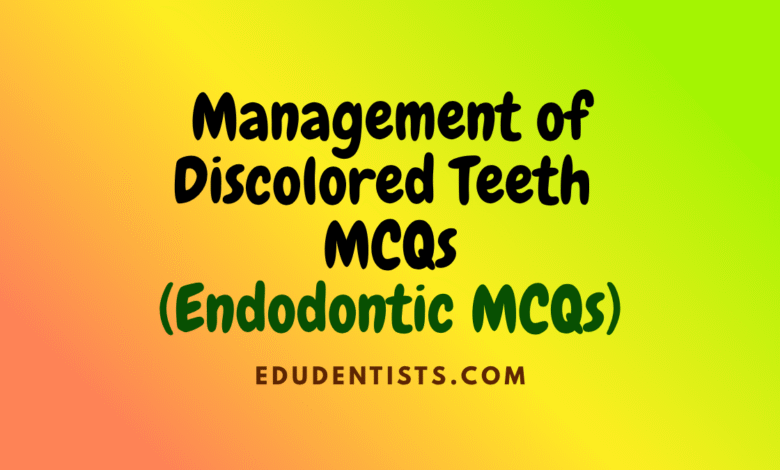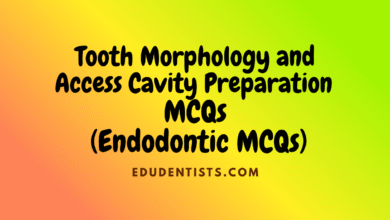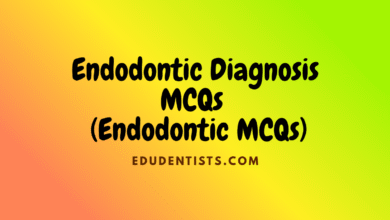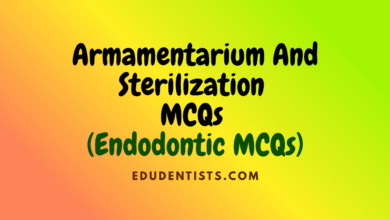Management of Discolored Teeth MCQs (ENDODONTICS MCQs)
Management of Discolored Teeth MCQs (ENDODONTICS MCQs)

Management of Discolored Teeth MCQs (ENDODONTICS MCQs)
Management of Discolored Teeth MCQs (ENDODONTICS MCQs)
1. The most deleterious side effect of bleaching on non-vital teeth. is:
A. Percolation
B. Cervical resorption
C. Erosion
D. Internal resorption
2. The “in-office non-vital bleaching technique” is:
A. Walking bleach technique
B. Power bleach technique
C. Thermocatalytic technique
D. Night guard technique
3. Bleaching of vital teeth by “In-office technique” is called as:
A. Power bleach technique
B. Thermocatalytic technique
C. Night guard technique
D. Walking bleach technique
4. Microabrasion techniques for elimination of discoloration of teeth work by:
A. Removing surface enamel
B. Bleaching stains
C. Bleaching developmental defects
D. All of the above
5. The best material for sedation of dental pulp is:
A. Zinc oxide-eugenol
B. Zinc phosphate
C. Calcium hydroxide
D. All of the above
6. External tooth discoloration can be caused by:
A. Excessive fluoride intake
B. Prolonged antibiotic use
C. Trauma to the tooth
D. All of the above
7. Internal tooth discoloration can be caused by:
A. Pulp necrosis
B. Dental caries
C. Aging
D. All of the above
8. The technique used to mask severe tooth discoloration by placing a thin layer of tooth-colored material is called:
A. Veneering
B. Bonding
C. Crown placement
D. Composite restoration
9. Tooth discoloration caused by tetracycline use during tooth development is classified as:
A. Intrinsic discoloration
B. Extrinsic discoloration
C. Endogenous discoloration
D. External resorption
10. The process of microabrasion involves the use of:
A. Hydrochloric acid
B. Pumice
C. Air abrasion
D. Rubber cup polishing
11. The most common side effect of tooth bleaching is:
A. Tooth sensitivity
B. Enamel erosion
C. Pulp necrosis
D. Gingival recession
12. The use of a rubber dam during tooth bleaching helps to:
A. Protect the soft tissues
B. Isolate the tooth
C. Enhance the effectiveness of the bleaching agent
D. All of the above





